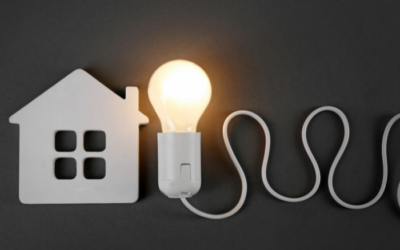The art of considering human physical and psychological needs.
What is ergonomics?
Ergonomics is a science focused on optimizing the interaction between humans and their activity. It explores how to improve work environments and conditions so they align with human physical and psychological needs. The word comes from the Greek ergon (“work”) and nomos (“law” or “science”), literally meaning “the laws of work.” As an interdisciplinary field, ergonomics combines various scientific and engineering principles to reduce injury risk and enhance work efficiency.
This discipline includes a range of methods and tools to assess what a workplace, machinery, and equipment should be like to ensure healthy and comfortable working conditions. Through studying work environments, ergonomics establishes standards and regulations designed to reduce stress, fatigue, and health issues.
Ergonomics began to develop in the mid-20th century, though its roots go back to ancient civilizations. For example, in Ancient Egypt, attention was already given to work organization and tool design. Later, during the Industrial Revolution in the 18th century, interest in improving work efficiency grew, as it increased productivity.
In the 20th century, ergonomics became a formal science thanks to advances in technology and research into human physiology and psychology. Researchers and engineers began studying factors affecting human movement, psychological impact, and biomechanics to improve work environments. Since then, ergonomics has emerged as a specialized scientific field.
The Role of Ergonomics in the Modern World
In today’s world, ergonomics plays a vital role not only in increasing productivity but also in preserving human health and wellbeing. Challenging working conditions, long office hours, the presence of technology, and modern life stressors all raise the risk of health problems—especially those related to muscles, joints, and the nervous system.
Thus, ergonomics is essential for:
- Preventing injuries and fatigue,
- Enhancing worker efficiency,
- Designing more intuitive and user-friendly technologies and equipment.
As a result, ergonomics is not merely a science, but also an art that seeks to harmonize human needs and productivity by providing solutions that support physical health and psychological balance.
Theoretical Foundations of Ergonomics
Ergonomics is based on several core principles aimed at creating a healthy, efficient work environment:
- Comfort: The workplace and tools should be designed to support physical comfort, reducing muscular and nervous strain and preventing health issues.
- Safety: Ergonomics aims to ensure safe work environments. Workers should feel secure, which decreases both physical injuries and stress. Equipment placement, usage guidelines, and the overall environment significantly influence safe work.
- Efficiency: Ergonomics relates to quality and speed of work by applying methods that help people perform tasks without extraneous effort or wasted time, boosting productivity.
- Individualization: Considering each person’s physical and psychological traits. Ergonomics strives to create environments that meet diverse needs, accounting for age, physical fitness, and mental state.
- Interface simplicity: Tools and tech devices should be easy and intuitive to use, minimizing errors and allowing focus on main tasks.
Types of Human Needs: Physical, Psychological, and Social
Ergonomics studies human needs to ensure that work environments satisfy them:
- Physical needs: The body operates best in environments without added pressure or tension. Factors like posture, lighting, ventilation, temperature, and workspace layout are essential for physical wellbeing. For example, ergonomic chairs and desks reduce strain on the spine, neck, and eyes during long seated work.
- Psychological needs: Work environment and conditions affect mental state. Comfortable, safe, and calm surroundings help reduce stress, improve focus, and boost creativity. Mental comfort significantly influences work quality and productivity.
- Social needs: Collaboration is common in work environments. Ergonomics supports healthy interpersonal relationships through solutions that promote cooperation and effective communication.
Numerous studies confirm that good ergonomic conditions increase work efficiency. For instance, employees with proper ergonomic solutions experience 20–30% less stress and fatigue compared to those in non-ergonomic environments—yielding both economic and social benefits.
Implementing Ergonomics in the Workplace
With the growth of computer technologies, ergonomics emphasizes healthy office conditions. Proper posture, furniture design, and workspace setup greatly reduce muscular tension and negative effects of unhealthy work habits.
Ergonomics in Transportation and Industry
In physical labor environments like transport and industry, ergonomics focuses on reducing physical burden, improving work time efficiency, and lowering injury risk. Vehicles and industrial equipment are redesigned to meet human physical and psychological needs.
Critical Areas: How Ergonomics Minimizes Injury Risk
In industrial settings, ergonomics examines movements, work heights, ideal postures, and weight considerations to reduce injury risk. Using ergonomic tools, workers can perform tasks without excessive physical strain.
Impact of Technological Innovations on Ergonomics
Advances in technology bring new opportunities for ergonomic applications. Modern computer programs and innovative devices enable environments tailored to human needs.
For example, high-tech chairs, desks, and interactive screens that self-adjust allow users to set their positions according to preferences, promoting health and reducing muscular strain—especially for those working seated all day.
Special software—like VR-based workstations—enables simulation and testing of ergonomic environments without real-world modifications, making prototype testing and refinement much easier.
Ergonomic Principles for Interfaces and Devices
In technology use, the human-device interaction is key. A primary goal of ergonomic design is to make interfaces intuitive and accessible for effective, frictionless use.
Effective ergonomic interfaces consider memory, attention, and perception characteristics:
- Clarity and simplicity: All actions and controls should be understandable and easy to access.
- Stepwise progression: Complex functions are broken into simple steps to reduce error chances.
- Comfortable reach: In some interfaces (like adjustable desks or mobile control panels), functions should be accessible without excessive movement.
Operational Memory and Attention Ergonomics
Optimizing attention and short-term memory is crucial in multitasking scenarios. Since working memory is limited, devices and software should be designed to reduce cognitive load.
Technological methods include:
- Prompts and alerts to notify users of errors,
- Information automation to progress or correct actions automatically,
- Color-coded systems—using colors for steps or actions to aid quick orientation.
Psychological Needs and Ergonomics
This section explores how ergonomics supports psychological wellbeing, particularly in reducing stress and enhancing focus.
How Ergonomics Reduces Stress
Work-related stress adversely affects quality and health. Ergonomics offers methods to lower stress—especially during prolonged, heavy tasks:
- Providing comfortable positions and environments tailored to physical needs helps workers feel more at ease,
- Designated transition areas—such as rest corners—offer short breaks to ease stress.
Ensuring Focus and Psychological Stability
Stable mental state is vital for concentration and efficiency. Ergonomic environments aim to reduce noise, offer proper lighting and interior design that promote calm.
When a worker has a quiet, balanced environment, it’s easier to focus without distraction. Proper placement of devices also helps minimize interruptions.
Emotional Ergonomics: Human–Machine Interaction
The relationship between people and technology can positively or negatively influence mood and performance. Emotional ergonomics aims to create environments where devices and tools are intuitive and user-friendly.
Applying Ergonomics in Healthcare
In healthcare, ergonomics aids both staff and patients by ensuring medical devices are easy to use, reducing medical errors. It’s also important that equipment is readily accessible to medical personnel.
Ergonomic Solutions for Medical Staff
Doctors and nurses often face high stress and heavy workloads. Comfortable, efficient equipment reduces physical and psychological strain. Ergonomic solutions—like foot-adjustable tables and supportive chairs—help preserve health among medical staff.
Ergonomics in Education
Educational environments benefit from ergonomics to support student health and concentration. Classrooms and study spaces should enhance long-term focus and physical wellbeing.
Examples include:
- Ergonomic desks and chairs suited to students’ height and body types—important for reducing spinal and neck injuries,
- Effective lighting—natural or non-glare artificial lighting supports vision and concentration,
- Ventilation—to maintain oxygen levels for better focus.
Health Solutions for Students
Many students spend long hours seated. Ergonomic solutions include:
- Short movement breaks during classes,
- Standing desks or adjustable tables that allow shifting between sitting and standing to boost circulation,
- Advanced tech tools that help students monitor posture with adjustable screens.
Optimizing Energy and Focus in Schools
Ergonomic environments enable students to sustain focus longer. High-quality furniture, proper layout, and conducive atmosphere enhance concentration and energy, increasing learning outcomes by 20–30%.
Ergonomics in Everyday Life
Ergonomics also plays a major role at home. Household tools—including kitchen appliances, cleaning devices, and furniture—can be designed for physical comfort.
For example, kitchen tools with proper height and reach reduce joint and muscle load. Many home appliances have ergonomically designed handles and adjustments to lower strain during use.
Ergonomic Interior Solutions at Home
Properly organized home spaces ensure family members feel comfortable and have freedom of movement:
- Seating and beds should match users’ body dimensions,
- In home offices, height-adjustable desks enable both seated and standing work for health preservation.
Ergonomic design at home also supports psychological relaxation, with color schemes and décor that soothe and uplift mood.
Conclusion: The Future of Ergonomics
Future Outlook and Emerging Trends
The future of ergonomics will encompass more sectors and technologies. Innovative tools—including biosensors and AI—will enable more precise assessment of human needs and individualized work conditions.
Globally, ergonomics is becoming increasingly important as it focuses on meeting human physical and psychological demands.
Final Thought: Human Needs and the Necessity of Ergonomics
Ergonomics is not just a science, but also an art aimed at improving people’s lives. It’s a process that enables individuals to live better, more comfortable, and healthier lives by considering their physical and psychological needs. The goal of ergonomics is to create environments that not only enhance efficiency, but also make people feel better in their daily routines.






